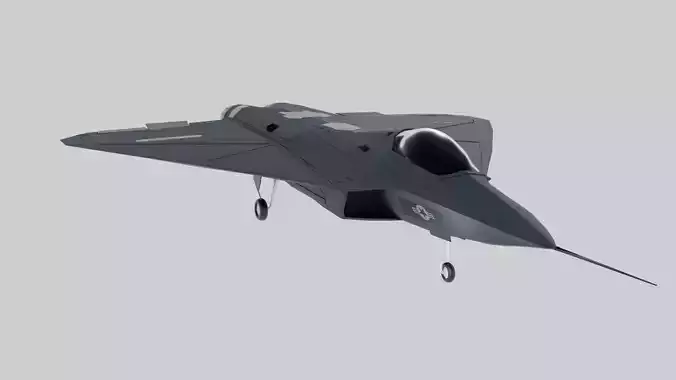1/49
Perfect for use in games and simulation projects.
The USAF Lockheed Martin X-44 MANTA (Multi-Axis No-Tail Aircraft) was an advanced conceptual aircraft developed in collaboration between Lockheed Martin, the U.S. Air Force, and NASA, with the primary goal of exploring the potential of a tailless fighter aircraft that achieves full flight control authority through 3D thrust vectoring alone. Unlike conventional aircraft, which rely on movable control surfaces such as vertical stabilizers (rudders) and horizontal tailplanes (elevators) for maneuvering, the X-44 was designed to eliminate these components entirely, significantly altering the traditional airframe configuration.
The MANTA was based on the airframe of the F-22 Raptor, one of the most advanced fifth-generation fighters in the world, but featured a stretched, full delta wing configuration. This delta wing, lacking any vertical or horizontal tail surfaces, allowed for increased internal volume, which translated into a greater fuel capacity than the F-22. This, in turn, promised longer range and greater endurance—a valuable trait in both air superiority and strike roles.
To maintain flight stability and control without traditional aerodynamic surfaces, the X-44 utilized an advanced thrust vectoring system capable of directing engine thrust in multiple directions—pitch, yaw, and roll. This multi-axis thrust vectoring allowed the aircraft to maintain control authority even at high angles of attack or during post-stall maneuvers, potentially offering superior agility and maneuverability compared to traditional fighters.
In addition to performance benefits, the design offered potential advantages in stealth, mechanical simplicity, and maintenance. By removing tail surfaces, the MANTA could reduce radar cross-section, making it harder to detect by enemy radar systems. Fewer moving parts also meant reduced mechanical complexity, which could improve aircraft reliability and lower maintenance costs over the long term.
Although the X-44 MANTA never progressed beyond the conceptual and study phase, it represented a radical rethinking of modern fighter aircraft design and control philosophy. Its research contributed to ongoing development in thrust vectoring technology, autonomous flight control, and stealthy airframe design—lessons that continue to influence modern and future aircraft, including sixth-generation fighter programs.
Formats include: OBJ, FBX. Feel free to check out the other models, just click on the user name to see the complete portfolio.
REVIEWS & COMMENTS
accuracy, and usability.
















































